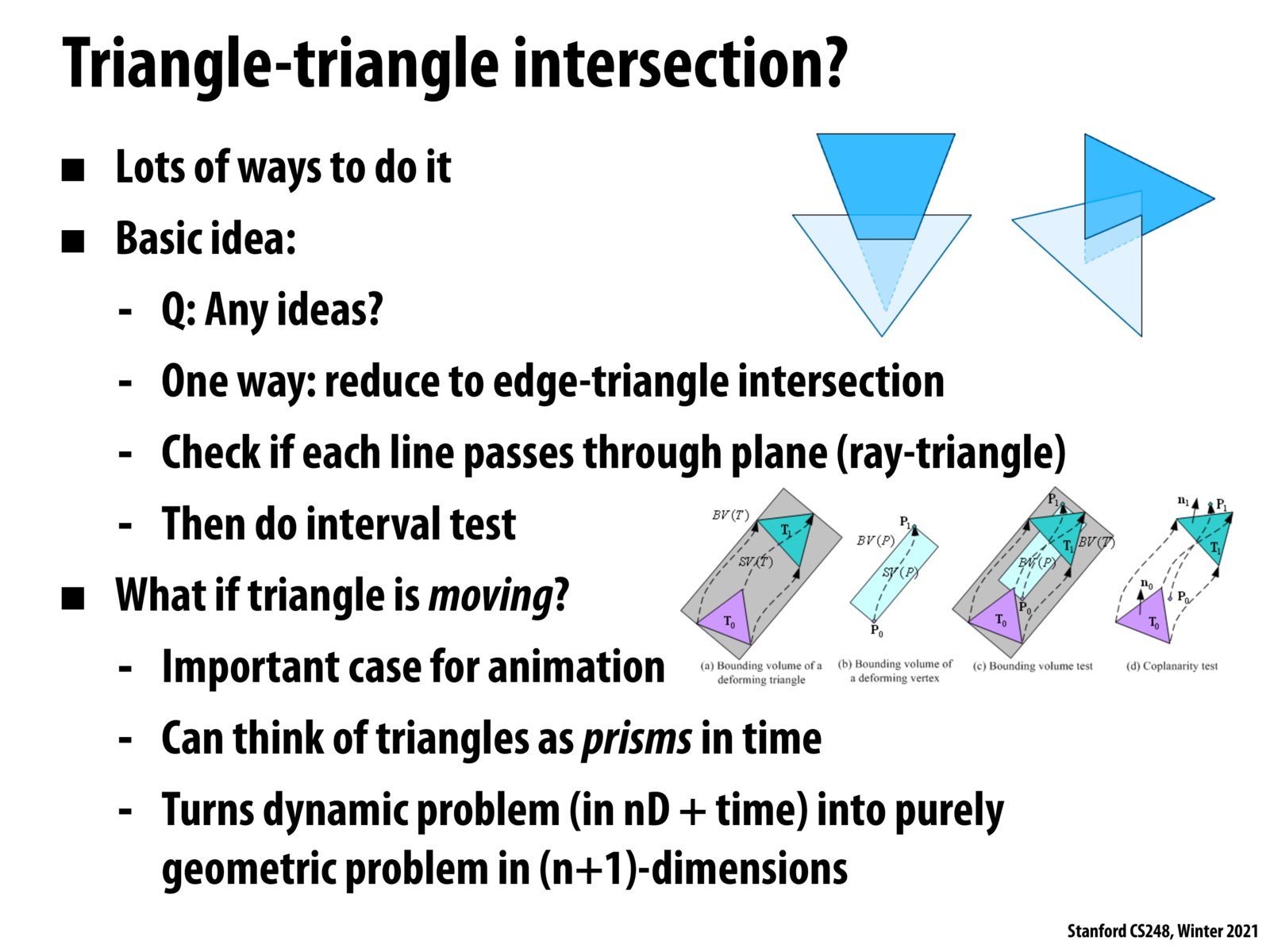
Back to Lecture Thumbnails

dan

liangcyn
I think so; it looks like we basically make prisms from the triangles based on where they were in at every moment in time, and if the prisms intersect then there would be a triangle-triangle intersection where the prisms intersect (and we can find the time of intersection through figuring out where, length-wise, in the prisms the triangles intersected)-- please correct if I'm wrong!

masoudc
seems right to me liangcyn, but, it was explained as something that's done to determine if there was collision between frames. So I think the frames are already the lowest level of discretization that's available. For that reason I don't thin the time of intersection is the desired output but merely a boolean.
Please log in to leave a comment.
Copyright 2021 Stanford University
I am a bit confused by the method of detecting collisions when the triangle is moving? Are you just adding a space dimension for time rather than having a time dimension?